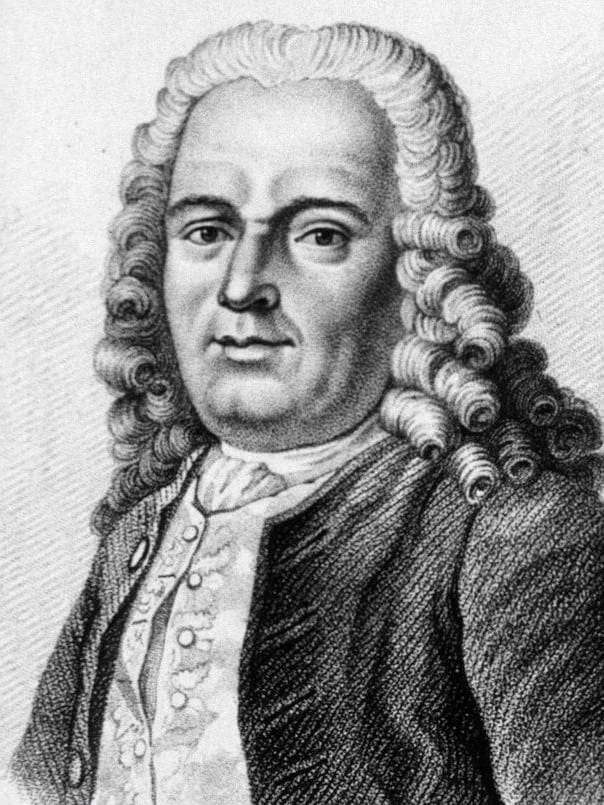Jean-Louis Petit
Jean-Louis Petit (1674 – 1750) was a French surgeon and anatomist.
First postulated that ‘carpal dislocations‘ were in fact fractures of the distal end of the radius. Inventor of the petit-type tourniquet to suspend circulation of blood quickly and easily while minimizing pain. Marked a transition in surgery from managing blood loss to preventing blood loss.
Petit was known for his surgical skill and his case reports of hemorrhage, lacrimal fistula, operation on the frenulum, treatise on bone diseases and his general treatise on surgical operations (on which he worked 12 years and which was finished after his death by F.D. Lesne)
Petit led a group surgeons of the Académie Royale de Chirurgie including Henri-François Le Dran. The team provided the first complete clinical descriptions of the extradural hematoma, contre-coup injury and the lucid interval post head injury.
Biography
- Born on March 13, 1674, Paris
- 1700 – Certificat de maîtrise en chirurgie (Master’s certificate in surgery)
- 1715 – Member of the l’Académie Royale des sciences (Royal Academy of Sciences)
- 1731 – Inaugural Director of the l’Académie Royale de chirurgie (French Royal Academy of Surgery) by order of King Louis XV
- Died on April 20, 1750 in Paris
Medical Eponyms
Colles fracture (1705)
Extra-articular fracture of the distal radius with dorsal angulation of the distal fragment. Frequently associated with an ulna styloid fracture and volar angulation of the fracture apex
Hippocrates described traumatic injuries about the wrist as dislocations. He defined four distinct directions of dislocations, and his influence extended for nearly 2000 years through the writings of Gallen, Palladius, Celsus, Duverney, and Fabricius.
The joint of the hand is dislocated either inward or outward, most frequently inward.
In 1705, Petit suggested that traumatic swelling and displacement at the wrist was as a result of a distal radius fracture rather than a luxation or dislocation as previously believed.
“A l’égard du déplacement selon sa longueur, je sçais que l’on peut le disputer dans la fracture d’un seul os: mais nous le prouverons ci-après d’une maniere à n’en pas douter”
Petit JL. De la fracture de l’avant bras 1705; 2: 115-126
As to the displacing length-ways, I know it may be disputed in the fracture of one bone only: But I shall prove it hereafter so as to leave no Room to doubt it.
Petit JL. De la fracture de l’avant bras 1705; 2: 115-126
Petit-type tourniquet (1718)
1718 – Petit presented a new type of device for stopping blood flow at the Royal Scientific Academy in Paris. He attached a circular bandage to a screw and a leather pad in order to apply pressure to a specific point.
Deriving from the French word ‘tourner’, (to turn), Petit named his invention ‘tourniquet‘. This Petit-type tourniquet became the most commonly used tourniquet throughout the 1800s
The operator can control it itself without another person is obliged to keep it clamped and relax as we need it as quickly as desired; Finally he just compresses the vessels we want to compress, and gently compresses the other parties; which is a perfection that some ignorant regarded as a defect
Oeuvres complètes 1844: 808-809
Major Publications
- Petit JL. L’art de guérir les maladies des os: Traité des maladies des os. Paris: Cavellier 1705 [Tome I][Tome II] See controversies for name.
- Petit JL. De la fracture de l’avant bras. In: L’art de guérir les maladies des os, 1705; 2: 115-126 [Translation: Of the fracture of the Fore-Arm. In: A treatise of the diseases of the bones, 1726; 2(XI): 287-295]
- Petit JL. Traité des maladies des os [English translation: A treatise of the diseases of the bones, Woodward. 1726]
- Petit JL. D’un nouvel instrument de chirurgie. Histoire de l’Académie royale des sciences 1718. reprinted edition: 1741: 199-202. [Petit-type tourniquet]
- Petit JL. Traité des maladies chirurgicales: et des opérations qui leur conviennent. Paris: Méquignon. 1790 [Vol I],[Vol II], [Vol III]
- Petit JL. Oeuvres complètes de J.L. Petit: maladies des os, maladies chirurgicales. Paris. 1844
Controversies
Original treatise on the diseases of the bones published in 1705 as ‘L’art de guerir les maladies des os’ [The art of curing diseases of bones]. The work was reprinted page for page in two volumes, by the same publisher, as Traité des maladies des os in 1775
References
Biography
- de Fouchy JPG. Éloge de M. Petit, dans Histoire de l’Académie royale des sciences. 1754:191-202
- Louis A. Eloge de M. Petit: prononcé à la séance publique de l’Académie Royale de chirurgie, le mardi 26 mai 1750
- Louis A. [Excerpts from the eulogy of Jean-Louis Petit presented during the public session of the Royal Academy of Surgery on May 26 1750 by A. Louis] Ann Chir. 2001; 126(5): 475-81.
- Bibliography. Petit, Jean-Louis. WorldCat Identities
Eponymous terms
- Savigny JH. A Collection Of Engravings, Representing The Most Modern And Approved Instruments Used In The Practice Of Surgery. 1798
- Hawk AJ. ArtiFacts: Jean Louis Petit’s Screw Tourniquet. Clin Orthop Relat Res. 2016; 474(12): 2577-2579 [Petit-type tourniquet]
- Ganz JC. The lucid interval associated with epidural bleeding: evolving understanding. J Neurosurg. 2013;118(4):739-745
Resident medical officer in emergency medicine MB ChB (Uni. Dundee) MRCS Ed. Avid traveller, yoga teacher, polylinguist with a passion for discovering cultures.



